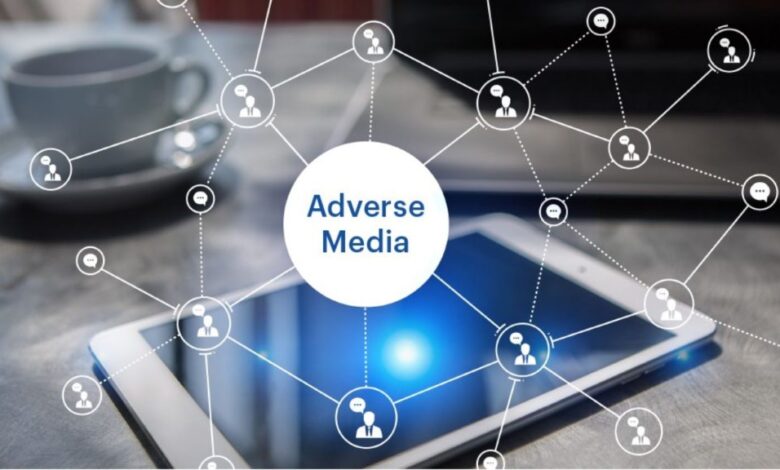The Importance of Adverse Media Screening in AML Compliance

In today’s increasingly interconnected financial ecosystem, the threat of money laundering and financial crime is growing more sophisticated. As regulators around the world step up their oversight, financial institutions are under mounting pressure to maintain stringent Anti-Money Laundering (AML) programs. Among the essential tools in the AML toolkit, adverse media screening has emerged as a vital mechanism for identifying hidden risks before they can impact an organization’s reputation or regulatory standing.
What Is Adverse Media Screening?
Adverse media screening—also known as negative news screening—is the process of monitoring public sources of information to detect potential risks associated with customers, counterparties, or beneficial owners. These sources may include online news publications, blogs, court records, social media, and databases that publish information about criminal activity, regulatory actions, or financial misconduct.
The key distinction between adverse media and more formal watchlists (like sanctions or politically exposed persons (PEP) lists) is that adverse media is unstructured and constantly evolving. It provides a broader, more nuanced view of an individual or entity’s risk profile, capturing reputational and behavioral concerns that may not have yet resulted in legal action.
Why It Matters in AML Compliance
1. Early Detection of Risk
One of the most compelling reasons for implementing adverse media screening is its ability to uncover red flags before they escalate into regulatory or legal issues. While sanctions and PEP lists are reactive—listing individuals or entities after wrongdoing has been identified—adverse media can offer early warnings by highlighting suspicious behavior or associations covered in credible news outlets.
For example, a prospective client may not be on any formal blacklist but may have been named in a news investigation regarding corruption or fraud. Such insights allow compliance teams to reassess the risk and make more informed onboarding decisions.
2. Meeting Regulatory Expectations
Global regulatory bodies such as the Financial Action Task Force (FATF), Financial Conduct Authority (FCA), European Banking Authority (EBA), and FinCEN expect financial institutions to adopt a risk-based approach to compliance. This includes the use of adverse media screening, particularly for higher-risk clients and transactions.
In recent years, enforcement actions against banks and financial firms have included penalties related to insufficient due diligence and the failure to detect or respond to adverse news about clients. As such, regulators now view adverse media screening not as a nice-to-have, but as a core component of effective AML programs.
3. Strengthening KYC and Ongoing Monitoring
Know Your Customer (KYC) processes are the first line of defense in AML compliance. However, KYC isn’t a one-and-done task—it’s an ongoing responsibility. Adverse media plays a critical role in both initial onboarding and periodic reviews, allowing institutions to detect new or evolving risks.
With proper media screening in place, organizations can:
- Reassess risk scores as new negative information emerges
- Update customer profiles based on verified reports
- Identify when enhanced due diligence (EDD) or account closure is warranted
4. Protecting Reputation and Operational Integrity
In today’s digital age, reputational damage can spread faster than regulatory sanctions. A single headline connecting your institution to a client involved in fraud, money laundering, or terrorism financing can erode public trust and investor confidence overnight.
Adverse media screening serves as a reputational firewall—flagging potentially harmful associations before they create public relations or business continuity issues. When implemented effectively, it provides both a compliance safeguard and a strategic risk management advantage.
Challenges in Adverse Media Screening
While the benefits are clear, adverse media screening is not without its challenges. Institutions must navigate:
- Information Overload: The sheer volume of data from news sources and databases can be overwhelming. Without proper filtering and prioritization, compliance teams may drown in alerts—many of which are irrelevant.
- False Positives: Common names, outdated reports, and low-quality sources can result in false matches, requiring time-consuming manual reviews.
- Multilingual and Jurisdictional Gaps: Institutions operating globally must screen in multiple languages and consider region-specific regulations and media outlets.
- Varying Credibility of Sources: Not all media reports are equally reliable. Screening systems must differentiate between credible journalism and speculative or defamatory content.
Leveraging Technology for Effective Screening
To address these challenges, many financial institutions are turning to advanced screening solutions powered by artificial intelligence (AI) and natural language processing (NLP). These technologies can:
- Automatically categorize and rank news by relevance and risk severity
- Reduce false positives by using contextual analysis
- Continuously monitor sources for real-time alerts
- Integrate adverse media insights into centralized risk profiles
By automating parts of the screening process, compliance teams can focus on decision-making rather than manual research, improving both speed and accuracy.
Best Practices for Implementation
To maximize the effectiveness of adverse media screening, institutions should:
- Establish Clear Risk Criteria: Define what constitutes adverse media for your organization and align it with your AML risk appetite.
- Use High-Quality Data Sources: Partner with vendors that offer comprehensive, reliable, and regularly updated content.
- Integrate with KYC and EDD Processes: Ensure screening results feed directly into customer due diligence workflows.
- Maintain Audit Trails: Document findings and actions taken in response to adverse media for regulatory reporting and internal reviews.
- Train Compliance Teams: Ensure analysts understand how to interpret results, assess risk, and apply the appropriate controls.
Conclusion
In a world where reputational damage and regulatory scrutiny can strike at any moment, adverse media screening is no longer a secondary tool—it’s a strategic necessity. It allows financial institutions to proactively identify risks, comply with evolving regulatory standards, and maintain the integrity of their operations. When supported by intelligent technology and embedded into a well-structured AML framework, adverse media screening becomes a powerful ally in the fight against financial crime.







